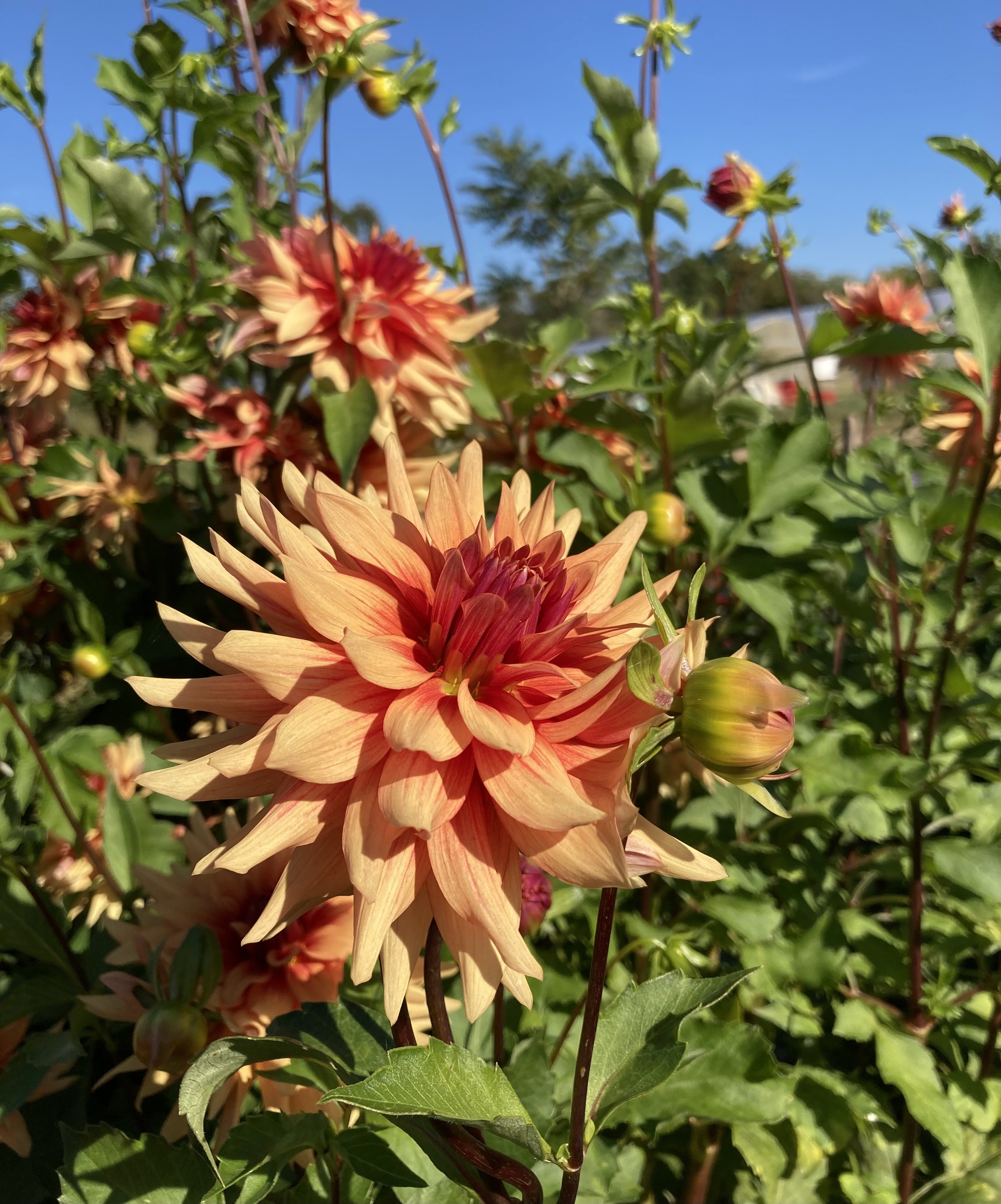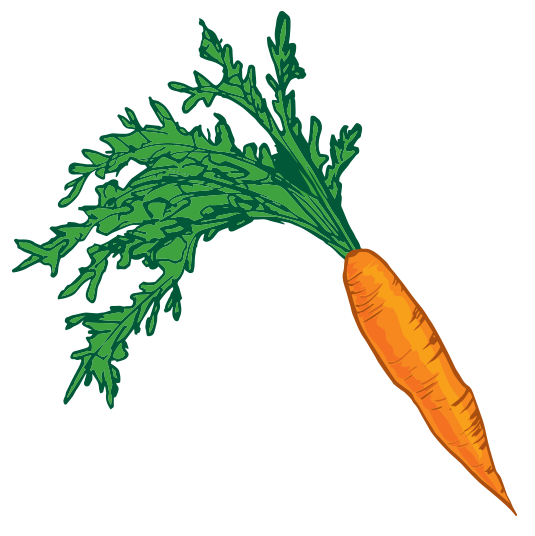
GROWING GUIDE
DAHLIAS
ANSWERS TO YOUR DAHLIA QUESTIONS…
WHEN?
Wait to plant your dahlia tubers until after all danger of frost has passed, about the same time you would plant tomatoes. Tubers planted into soggy soil or before soil temps are high enough are susceptible to rot. On the farm in New Milford, CT (zone 6a), we plant dahlia tubers in the field after May 10th, making sure there is no frost in the forecast. ORDERS WILL BE SHIPPED IN THE SPRING.
WHAT?
Parts of a Dahlia Tuber
Tubers come in many shapes and sizes depending on the variety. Some will be single tubers and some may be multiple tubers attached to one crown. They can be smooth or wrinkly. Some will have dormant eyes; others will have sprouts already coming out of the crown. All variations are fine and ready to plant when the time is right.
* If you receive a small clump of tubers from us, as opposed to a single tuber, please do not attempt to divide them. This could cause damage and result in failure to grow. Plant the entire clump, intact. Take care when handling any tuber- if a "neck" gets bent or broken, the plant may not grow.
WHERE?
SUN: Find a spot that gets 6 or more hours of direct sun each day. In very hot climates, dahlias do well with a bit of shade in the afternoon.
SOIL: Ideal soil conditions for dahlias are: well-draining, warm, modest fertility, some organic matter, and a pH of 6.5-7 (preferred pH for most plants in your veggie and cut-flower garden). Take caution if fertilizing- too much nitrogen will cause big leafy plants, but few blooms. Distribute a ½ inch layer of good quality compost on your planting area and mix it in with the top 3-6" of soil.
HOW?
PLANTING:
Dig a hole and plant the tuber lying on its side, 12-18" apart (from crown to crown) from its neighbor. Cover with 2" of soil.
MULCHING: Mulching will help regulate soil moisture, reduce erosion, keep the weeds at bay, and add organic matter to the soil. We recommend applying a 1-1.5” layer of straw or shredded leaves over the planting area after sprouts emerge from the ground, taking care not to break the sprouts or bury them.
STAKING: (recommended for varieties with 2.5’ height or taller) Adding supports at the time of planting is a good idea for two reasons. You can drive them into the ground without damage to the tubers and roots, and they can act as a placeholder for the plant in your garden before shoots emerge. Dahlias grown without supports can still produce flowers, but the plants may sprawl, causing the stems to curve.
Use whatever you like: a bamboo stick, 1” wooden stake, a fallen branch, a tomato cage, or improvise. Just be sure it is a sturdy support, 3-5’ tall. Loosely tie the plant to the stake as it grows. If you have several plants together, use multiple stakes to make a cage with rows of twine tied between them at 1’ height increments.
If you wait until after the plant is mature, drive your stake into the ground at least 6” away from the base of the stem to avoid damaging the roots underground.
WATERING: Unless you are planting in a very hot/dry climate, let Mother Nature be in charge for the first few weeks. Wait to water your tubers until the exciting moment, 2-5 weeks after planting, when you see their sprouts popping through the soil and unfolding in the sun. Deeply water as needed.
PINCHING: When plants are 12-18” tall, or have at least 3-4 sets of leaves, pinch them back. Pinching back means you find the center tip (growing point) of the plant, and cut it off. This may seem like tough love, but you’ll be happy you did it. A pinched dahlia plant will be bushy with many branches, blooms, and longer stems. If a plant is not pinched, it is likely to be tall and thin, and produce fewer flowers.
You can cut anywhere from half an inch to a couple inches from the top of the plant- it’s not an exact science.
A good rule of thumb is to cut the stem just above the 3rd or 4th set of leaves (counting from the ground up). Two new branches will grow from that point.
HARVESTING: Picking your dahlias often and deadheading spent blooms will encourage the plant to make more flowers. To get the longest vase life, pick during the coolest parts of the day, select flowers with no signs of wilting, get the stems into water immediately, and remove lower leaves so that none are submerged under water.
We hope you enjoy growing your dahlias!
Questions? Send us a note at forthillfarm@gmail.com



